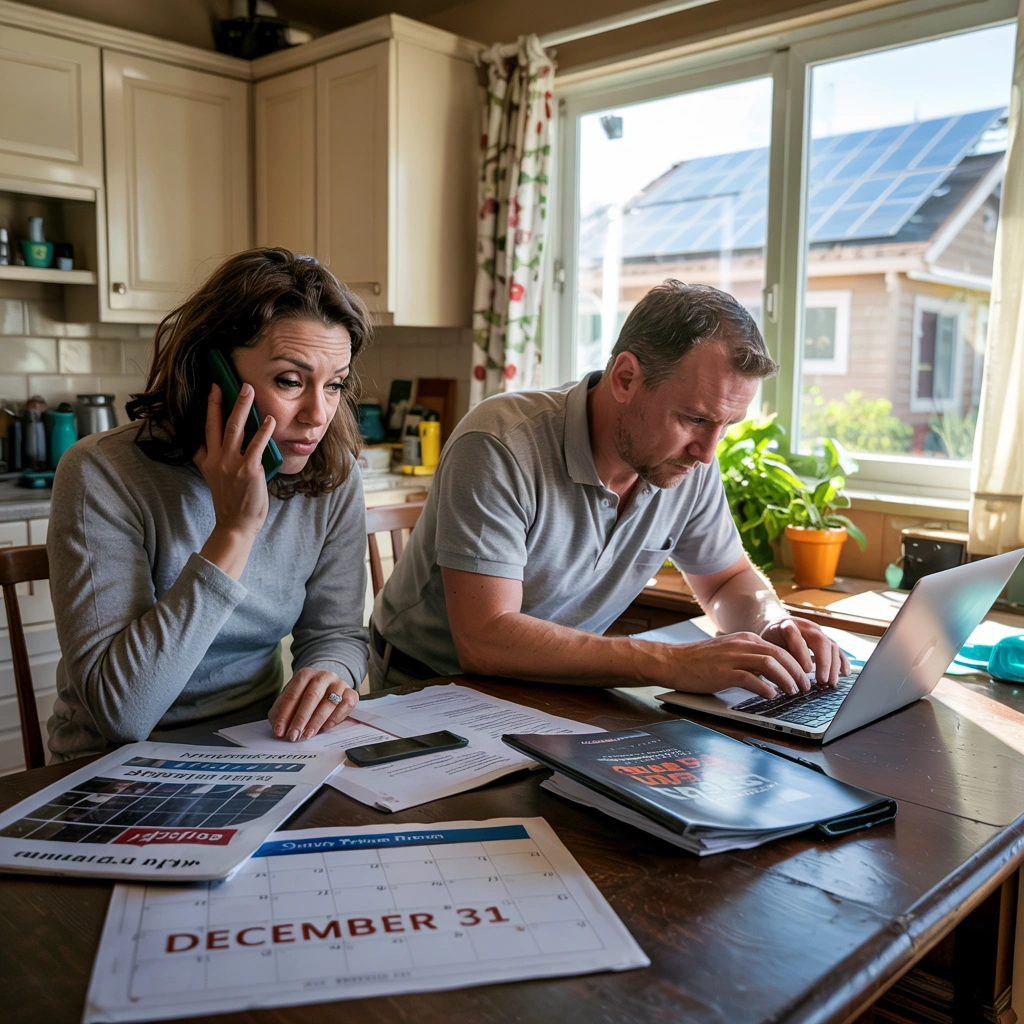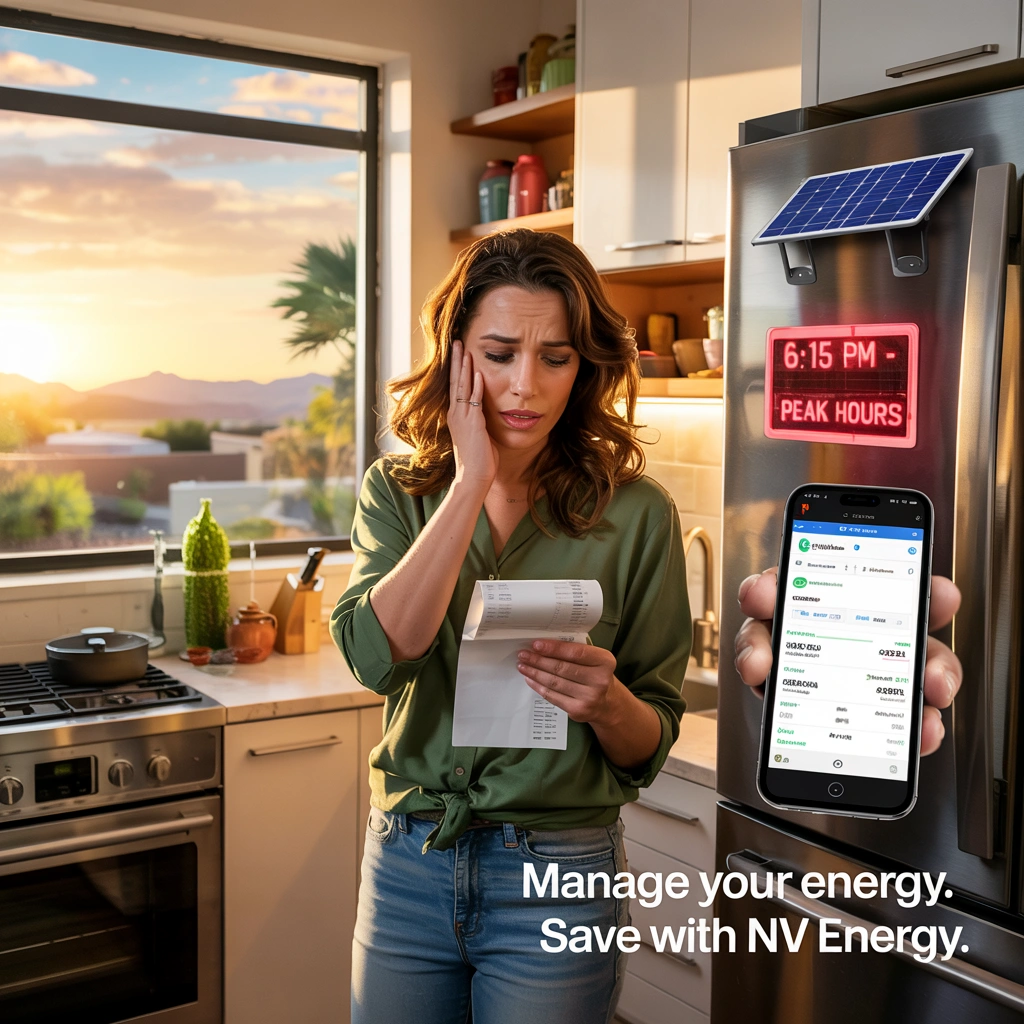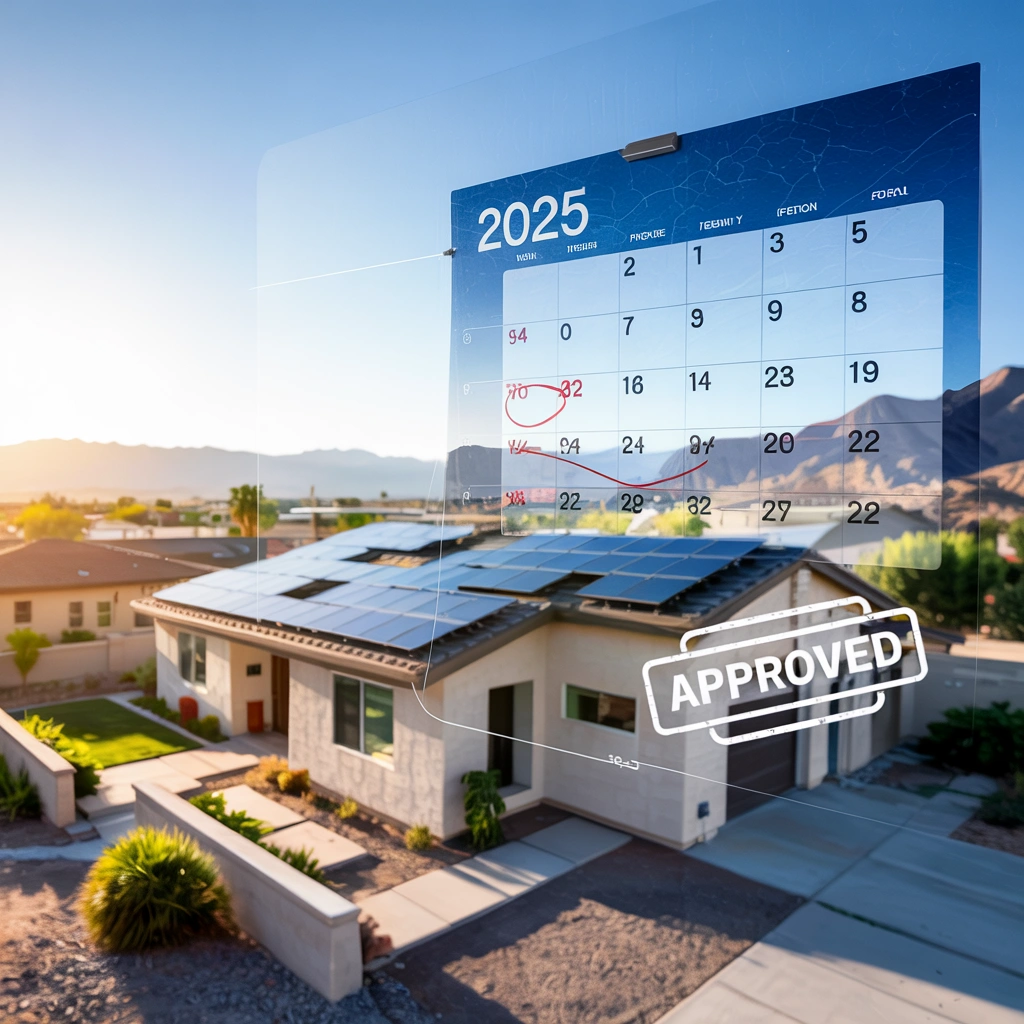
Summary: Nevada just terminated a $156 million solar program that would have helped 50,000 families slash their energy bills—but if you act fast, there’s still a way to save thousands before these remaining opportunities disappear forever.
Key Takeaways
- Nevada’s $156 million Solar for All grant termination pauses efforts to help 50,000 families who were counting on subsidized solar power to reduce energy bills
- The EPA terminated the program through federal legislation, leaving families with fewer options for affordable solar installation
- Nevada families can still access a 30% federal tax credit for solar systems installed before December 2025, though this credit expires at year-end
- Alternative energy-saving measures like heat pumps and smart home systems offer immediate bill reductions without government assistance
- Several solar incentive programs remain available, but quick action is essential to maximize savings before deadlines
The termination of Nevada’s Solar for All grant represents a significant setback for families struggling with rising energy costs. While this program would have helped thousands of households access affordable solar power, alternative pathways to energy savings still exist for those willing to act quickly.
50,000 Nevada Families Lost Solar Savings Opportunity
Nevada’s Solar for All program would have transformed energy affordability for families across the state. The Nevada Clean Energy Fund (NCEF) estimates that 50,000 Nevadans could have lowered their power bills through this initiative. The program was designed to create nearly 1,000 new jobs while making solar power accessible to low-income households, renters, and homeowners alike.
The program’s termination hits hardest for families already spending 15-20% of their income on energy costs. For a household earning $50,000 annually, this represents $7,500-$10,000 going straight to utility companies each year. Without subsidized solar assistance, these families face continued vulnerability to rising electricity rates that have consistently outpaced wage growth.
Solar installations typically reduce electricity costs by 20-30% over their 20-25 year lifespan. For families spending $2,400 annually on electricity, solar could have saved $480-$720 per year. Understanding how policy changes affect household energy strategies helps families navigate these challenging transitions and protect their budgets from both government program cuts and utility rate increases.
EPA Terminated Nevada’s $156 Million Solar Grant Amid Legal Challenges
The EPA terminated Nevada’s $156 million Solar for All grant through the “One Big Beautiful Bill Act,” which rescinded unobligated Solar for All funds nationwide. EPA Administrator Lee Zeldin announced the decision, stating the agency was “following the law and being a great steward of taxpayer dollars.” This action retracted $27 billion from the Greenhouse Gas Reduction Fund that financed Solar for All programs across all states.
The Program That Would Have Helped Renters Access Solar
Nevada’s program stood out for its approach to solar accessibility. Three distinct program types would have served different housing situations: rooftop solar for homeowners, solar installations for affordable housing complexes, and community solar projects specifically designed for renters. This multi-pronged strategy addressed the reality that many low-income households rent their homes, making traditional rooftop solar installations impossible.
Community solar projects represented a particularly innovative solution. These installations would have allowed renters to access solar energy benefits without property ownership requirements. Participants could have received credits on their utility bills for power generated by off-site solar installations, providing energy savings without any upfront costs or long-term commitments.
Up to 1,000 Solar Jobs May Not Be Created
The grant termination’s economic impact extends beyond individual household savings. Nevada’s solar industry had been preparing for significant workforce expansion. Steve Hamile, CEO of Sol-Up, employs nearly 200 people and noted that “stability and demand from this program are important for sustaining our workforce.” Mark Dickson, president of Simple Power Solar, called the Solar for All program “a critical stabilizer” for the industry during difficult economic conditions.
Solar installers, electricians, and related workers depend on steady project flow to maintain employment. Without the guaranteed demand from subsidized installations, companies may face workforce reductions. This creates a ripple effect throughout Nevada’s clean energy economy, potentially slowing broader adoption of renewable energy technologies.
EPA Cites Lost Authority Under Federal Legislation
The Nevada Clean Energy Fund disputes the termination, arguing their grant funds were already “contractually obligated” under federal law. Legal challenges are expected to test the EPA’s authority to cancel already-committed funds. The Nevada Attorney General’s office is reviewing the grant cut and considering all available legal options.
This legal uncertainty creates additional challenges for families and businesses that had begun planning around the program’s availability. Even if legal challenges succeed, the resulting delays could push any restored funding well beyond the timeframes that families need for immediate energy bill relief.
Your Energy Bills Will Keep Climbing Without Solar Relief
Nevada’s energy costs have increased consistently over the past decade, with summer air conditioning bills routinely exceeding $300 for many families. Winter heating expenses add additional strain to household budgets. These costs rise 2-3% annually, creating compounding financial pressure for families without alternative energy sources.
How Much Families Could Have Saved on Monthly Bills
The Solar for All program would have provided substantial monthly savings through subsidized installations. Qualifying households could have accessed solar systems with little to no upfront costs. Over a typical 20-year system lifespan, families could have saved $9,600-$14,400 in avoided electricity costs, not accounting for continued utility rate increases.
These savings become even more significant when considering Nevada’s extreme weather patterns. Peak summer demand drives electricity costs to their highest levels precisely when families need air conditioning most. Solar systems generate maximum power during these same high-demand periods, providing the greatest bill offset when families need it most.
Rising Utility Costs Hit Low-Income Households Hardest
Low-income households spend a disproportionate percentage of their income on energy costs. While higher-income families might absorb utility rate increases through budget adjustments, lower-income families often face impossible choices between paying energy bills and covering other essential expenses like food, healthcare, or housing.
NV Energy’s new rate design includes a mandatory daily demand charge for residential customers in the southern portion of the state, effective April 2026. Consumer advocates warned this charge could add more than $30 to some monthly bills for customers with solar panels. The Public Utilities Commission of Nevada (PUCN) approved this rate structure, which further increases the financial burden on households trying to manage energy costs.
Solar Systems Must Be Installed by December 2025 for Federal Credits
Despite the Solar for All termination, several incentive programs remain available for Nevada families ready to act quickly. Time becomes critical as solar installations typically take 3-6 months from initial consultation to completion. Families wanting to capture available incentives must start the process soon.
1. Federal Tax Credit Worth 30% But Has Important Limitations
The federal solar tax credit provides 30% of total installation costs back through tax returns for systems installed before December 31, 2025. For a typical $20,000 solar system, this represents a $6,000 credit, reducing net cost to $14,000. However, the “One Big Beautiful Bill” ends the 25D federal solar tax credit for homeowners on December 31, 2025, and this credit only benefits households with sufficient tax liability to claim the full amount.
The average cost for a 5 kW solar panel system is around $11,183 in Nevada. Factoring in the 30% federal tax credit, the cost comes down to $7,828, representing savings of $3,355. Families must have earned income and tax liability to benefit from this credit, which limits its accessibility for very low-income households.
2. Nevada’s Net Metering Program Credits Excess Solar Power
NV Energy’s net metering program allows customers to earn credits on their utility bill for excess electricity their systems send to the grid. When solar panels produce more power than homes consume, the excess flows back to the electrical grid. Utilities credit these contributions against future bills, creating ongoing savings throughout the system’s lifespan.
Nevada also offers additional incentives that immediately reduce solar costs. The state provides a 100% exemption on sales tax for all solar equipment, immediately reducing upfront system costs. Additionally, Nevada offers a 100% property tax abatement on the value added to homes by solar systems, meaning property taxes will not increase despite the added home value.
3. Private Solar Financing Without Government Assistance
Private solar companies provide financing options that make systems accessible without large upfront payments. Solar loans offer competitive interest rates for qualified buyers, spreading system costs over 10-20 year terms. Lease programs require no money down but provide immediate bill reductions, though families don’t own the systems.
Power purchase agreements (PPAs) allow families to buy solar electricity at fixed rates below utility prices. These arrangements provide immediate savings without ownership responsibilities. However, families should carefully compare long-term costs, as owned systems typically provide greater lifetime savings than leased arrangements.
Energy Efficiency Measures That Cut Bills Immediately
While solar installations provide long-term savings, energy efficiency improvements deliver immediate bill reductions at lower costs. These measures work synergistically with solar systems, reducing overall energy consumption and maximizing solar system effectiveness.
Heat Pumps Can Reduce Heating Costs by Up to 75%
Modern heat pump systems work effectively in Nevada’s climate while using 30-50% less energy than traditional heating and cooling systems. Heat pumps can reduce heating costs by up to 75% compared to electric resistance heating. Combined with solar panels, heat pumps create powerful bill reduction strategies that address both generation and consumption.
Heat pump installations qualify for federal tax credits and utility rebates, making them more affordable than traditional HVAC replacements. These systems provide both heating and cooling, eliminating the need for separate equipment. Advanced models maintain efficiency even in extreme temperatures, making them suitable for Nevada’s desert climate.
Smart Home Systems Automatically Adjust Based on Occupancy
Smart home technology optimizes energy usage through automated controls and real-time monitoring. Programmable thermostats learn household patterns and adjust temperatures for maximum efficiency. Smart water heaters heat water during off-peak hours when electricity rates are lower. Automated lighting systems eliminate waste by turning off lights in unoccupied rooms.
These systems pay for themselves through lower bills while providing improved comfort and convenience. Advanced smart home platforms integrate multiple systems, allowing coordinated energy management that maximizes savings. Some systems even integrate with solar installations, automatically shifting energy-intensive activities to times when solar generation is highest.
Federal Solar Incentives Available Through 2027
Beyond the 30% federal tax credit for homeowners ending in 2025, additional federal programs support solar adoption through 2027. The federal solar investment tax credit for commercial and third-party ownership projects can qualify if placed in service by December 31, 2027. Commercial solar installations receive additional depreciation benefits and investment tax credits.
Rural families may qualify for USDA Rural Energy for America Program (REAP) grants and loans. These programs provide up to 25% grants for renewable energy installations, which can be combined with other incentives. Veterans may access specialized financing through VA loan programs that include solar installations in home purchases or refinancing.
State and local programs continue operating despite federal changes. Some Nevada municipalities offer additional rebates or financing assistance for solar installations. Community development financial institutions sometimes provide low-interest loans for energy improvements in underserved areas. The Nevada Clean Energy Fund remains committed to providing tangible solutions to Nevada communities through its other programs despite the Solar for All termination.
While Nevada’s Solar for All grant termination eliminates a major opportunity for subsidized solar access, families can still achieve significant energy savings through remaining incentive programs, efficiency improvements, and strategic timing. The path to energy independence requires more individual effort now, but the financial benefits remain substantial for families ready to take action. M&J Trusted Marketing specializes in helping families navigate complex energy decisions and find the right solutions for long-term energy savings.
Frequently Asked Questions
How Solar Installation Companies Can Leverage This Content
This informative article, “What the Nevada “Solar for All” Grant Termination Means for Your Family’s Energy Bills” can be adapted and repurposed across multiple marketing formats to help increase website traffic for kitchen remodeling services, build trust with potential clients, and differentiate their services in a competitive market. We help with “The Nevada Solar Installer’s Guide to Trust-Building Content That Drives Traffic“ by transforming technical content into powerful marketing campaigns across all digital channels, ensuring maximum reach and engagement with potential customers.






